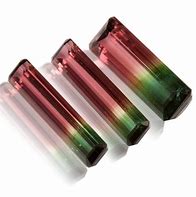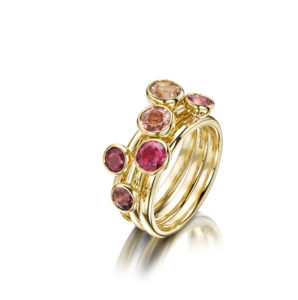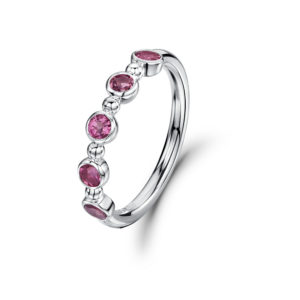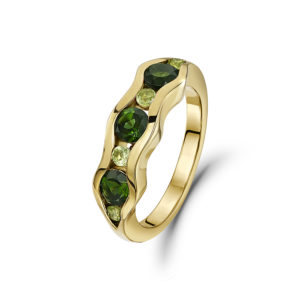



Tourmaline Key Facts
- 7-7.5 on the Mohs scale of hardness
- They vary in colour from yellowy through to green and plumy pink
- Tourmalines comes from countries, which include Madagascar, USA, Brazil, Burma, and East Africa
- Can have more than one colour in a stone – eg watermelon tourmalines
- October’s birthstone
- Said to give you success, confidence and good fortune.
General Information on Tourmaline
Tourmalines have a hardness of 7-7.5 and are complex borosilicates and vary in colour from yellowy through to green and plumy pink. The more turquoise the stone the more expensive it will be. Turquoise green tourmalines are often called indicolite but these are very rare.
Different shades of colour have been assigned different names within the trade: eg Rubellite tourmaline is Latin for red.
The tourmaline family has the same basic crystal structure, but occur in many colours. The name rubellite is referred to as the pink or red variety stone, just like ruby red stones these are the highest price within this family of stones. Rubellite crystals are striated with a triangular cross section, this may occur with a fibourous habit and show a cat’s eye when cut into a cabochon.
Pink and red tourmaline comes from many countries, which include Madagascar, USA, Brazil, Burma, and east Africa.
Indicolite tourmaline is a dark blue tourmaline and is often heat-treated to lighten the colour to produce a turquoise like colour. An important source for this stone is Siberia, where it is created in yellow clays formed from weathered granite. The fine bright blue tourmaline has recently been discovered in places like Brazil, Madagascar and the USA.
Watermelon tourmaline have a pink centre and a green rim, named because of their similar colouring to the pink flesh and green rind of a watermelon. Watermelon tourmaline is found in South Africa, East Africa, and Brazil.
Yellow is the most common of the tourmaline colours, but the emerald green is much rarer and of course makes it much more valuable. Until the 18th century it was often confused with the emerald itself. Emerald green tourmalines are found in Brazil, Tanzania, and Namibia, while yellow tourmalines are found in Sri Lanka.

